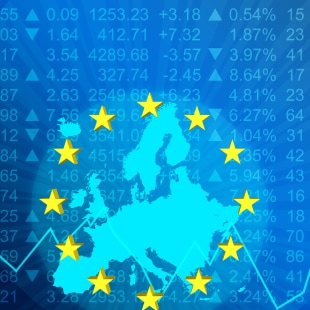The Covid-19 pandemic makes economic forecasting particularly challenging, for at least two reasons.
First, the quality of the forecasts –i.e. the observed forecast error- very much depends on whether the assumptions about the spread of the virus turned out to be close to or very far from reality. Second, the relationship between the drivers of spending decisions by households and companies and the actual amount of consumption and investment has become looser. To a large degree, this reflects the swings in uncertainty and confidence in reaction to news about the number of infections. In recent weeks, the new variants of the Covid-19 virus have rapidly become a major concern, forcing several countries –in particular in Europe- to tighten the health safety measures, more than expected at the start of the year. This should weigh on activity levels in the first quarter and an impact on second quarter activity is increasingly possible as well, although this depends on what happens to the restrictions.
This is particularly important for the eurozone, which has entered a double-dip recession: after the huge contraction of activity in the second quarter of last year, followed by a strong rebound in the third, growth again turned negative in the fourth quarter (-0.7% q/q), although less than expected. France recorded a decline in GDP of -1.3%, which was much smaller than the analysts’ expectation of -4% q/q. This good surprise came mainly from business and households’ investment and exports, which rose, whereas household consumption took the biggest hit from the lockdown in November-December. In Germany, the level of GDP was more or less stable (0.1%) whereas in Spain growth was clearly positive (+0.4% q/q). The opposite applies to Italy (-2.0%). An important factor for the global economy is that, to some degree, there is a certain desynchronisation between the key economies. This creates a diversification effect whereby negative growth in one area –the eurozone- is compensated by growth in others such as China –the only major economy having achieved a V-shaped recovery- and the US, where activity has been quite resilient despite the number of infections. This is quite a difference with the second quarter of last year when countries were experiencing a synchronised, deep recession.
The near-term outlook very much depends on the number of infections and the pace of vaccinations
As the former decline, restrictions will be eased, triggering a rebound of activity and demand. The increase in vaccinations should reduce worries of a possible rebound in infections, thereby further supporting confidence and paving the way for economies growing well above potential for several quarters. This supposes that new variants remain well under control. To accompany the recovery, policy support will remain significant, both fiscal and monetary. The ECB has eased further at its December meeting and its very accommodative policy will remain in place for a long time, considering that inflation will be slow to converge towards the ECB’s target.
The Federal Reserve will continue its quantitative easing, for which no end date has yet been set. It projects official rates to remain at their current level at least until the end of 2023. Low interest rates and an expansion of the balance sheet of central banks imply that access to financing at attractive conditions should remain easy. The transmission into the real economy very much depends on how credit demand evolves. This demand could be lackluster for certain types of credit –e.g. company investments- should confidence about the future remain too low. Fiscal stimulus is then particularly important to complement the monetary stance. In the US, after the fiscal package which has been voted in December, the Biden Administration is working on an additional plan of as much as USD 1.9 trillion. In Europe, the second semester should see the start of the deployment of funds in the context of the Next Generation EU plan, which will support growth.
The vaccination campaigns and the monetary/fiscal policy action should underpin confidence but there is concern that the lifting of temporary support measures –temporary unemployment, credit guarantees by the State, etc- could trigger an increase in defaults and, at least temporarily, unemployment. These factors would be a headwind for the recovery, without however derailing it.
As the recovery will progress, the attention of financial markets will later on in the year gradually shift to the implications for the guidance coming from central banks. For the US, this means assessing the likelihood that the Federal Reserve will slow down the pace of its asset purchases, whereas the ECB might stop its pandemic emergency purchase programme (PEPP). US Treasury yields should move higher on the back of fiscal stimulus and the economic recovery and because the Fed will accept and actually wants inflation to rise beyond 2%. As usual, eurozone bond yields will be very much influenced by what happens to US yields. The prospect of a more lasting recovery as a vaccine will be deployed, should contribute to somewhat higher bond yields. Stopping PEPP should cause some spread widening versus Bunds. We expect the dollar to weaken further versus the euro towards 1.25 by year-end. A risk factor in this respect is a change in guidance of the Fed, but this is unlikely in the near-term.
William De Vijlder
16 February 2021



